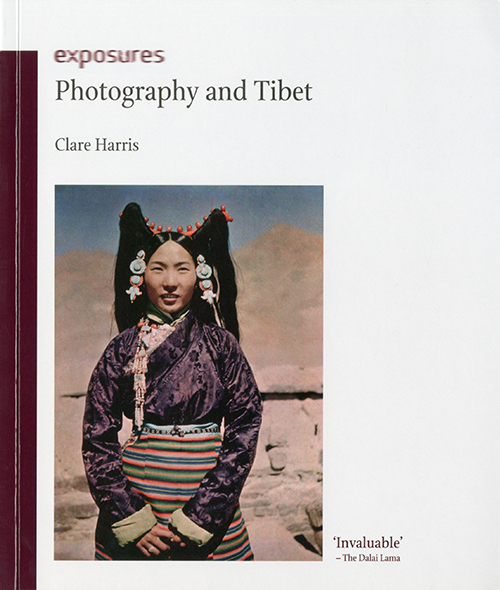| SIMON DENISON IMAGE & TEXT |
| PREVIOUS | NEXT |
PHOTOGRAPHY AND TIBET Clare Harris Reaktion Books, 2016 ISBN 978-1-78023-652-0 Pb
Photography and Tibet, the latest in Reaktion’s admirable Exposures series, tells (as its main theme) the story of Western fascination with the idea of Tibet from the mid-19th century, in an exemplary case study of photography’s role in the pursuit of knowledge, the construction of myth and the exercise of power. Secretive and almost entirely closed to foreigners, Tibet was terra incognita, a void on the map and an affront to the Victorian desire to know the world and thereby possess it. Those who attempted to cross the border from British India were summarily ejected. The lure of the exotic, nonetheless, brought many photographers to make pictures of Himalayan landscapes at the fringes of the Tibetan cultural zone, and of Tibetan people ‘performing their culture’ in Indian hill-stations such as Darjeeling. Tibet itself remained largely unphotographed. Tibetans generally shunned cameras not out of superstition, Harris tells us, but from fear of the ‘potentially violent intentions’ of the foreigners who used them. They had good reason. In 1903–04, piqued by the recent visit of a Russian to Lhasa, British patience ran out and the military was sent in, blasting their way against pitifully unequal resistance. Many in Britain were horrified by the invasion, but others justified it on the grounds of the photographs obtained as a result. Alongside the professionals’ splendid glass-plate views were snapshots taken by soldiers. Some of the most striking images here are the hand-captioned snaps sent home by Lt. GJ Davys, which casually record British outrages against Tibetan settlements and people. Tibet remained hard to visit in the first half of the 20th century, but a photographic record of places, people and rituals began to be made, not least by a handful of sensitive British diplomats who worked with Tibetan blessing. Curiously these ‘colonial era’ photographs are now highly treasured by Tibetans as they record Tibet as it once was, before the onset of Chinese hegemony in the 1950s when photography was strictly controlled by the Chinese and Tibet’s historic culture was systematically dismantled. |
 |
|---|---|